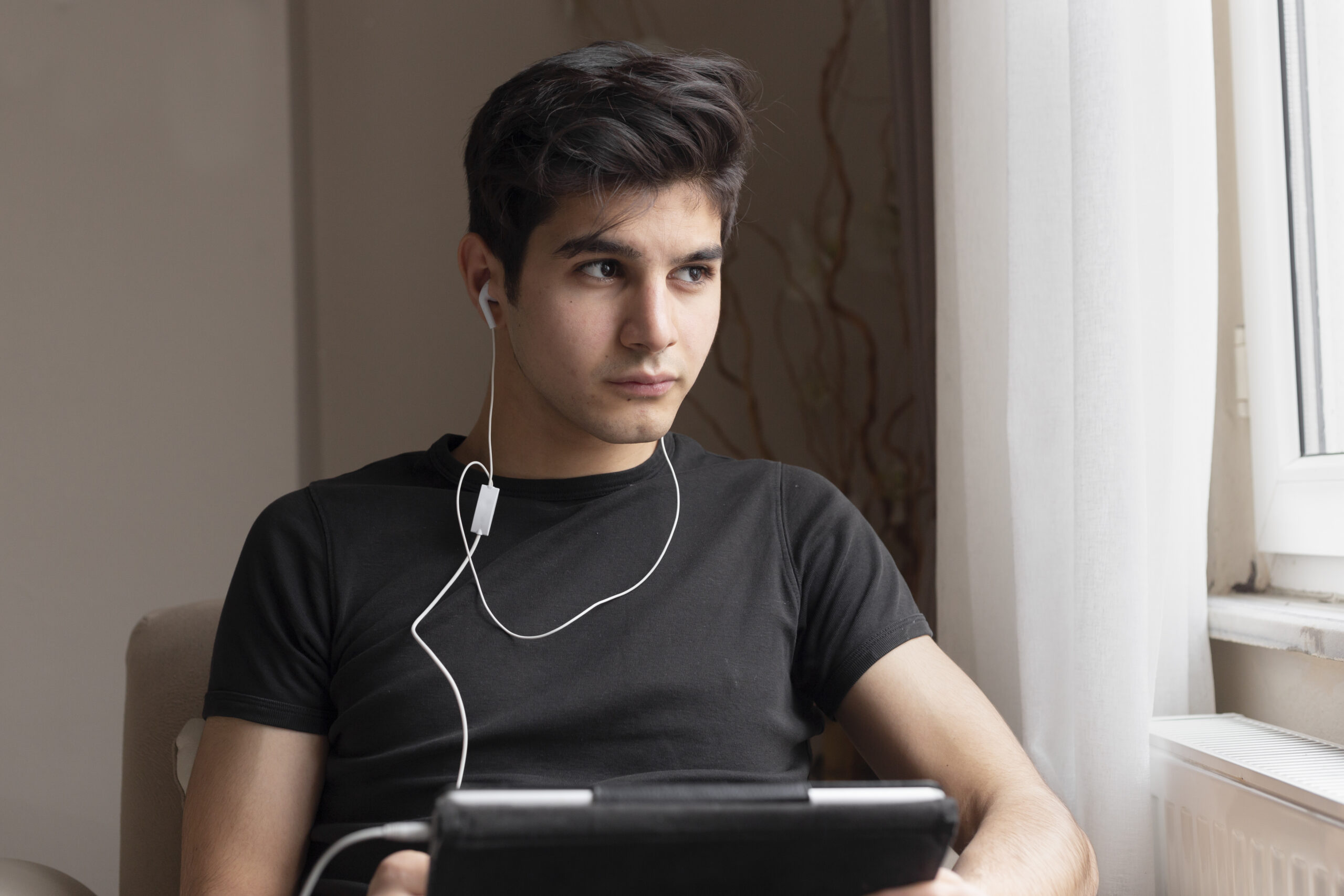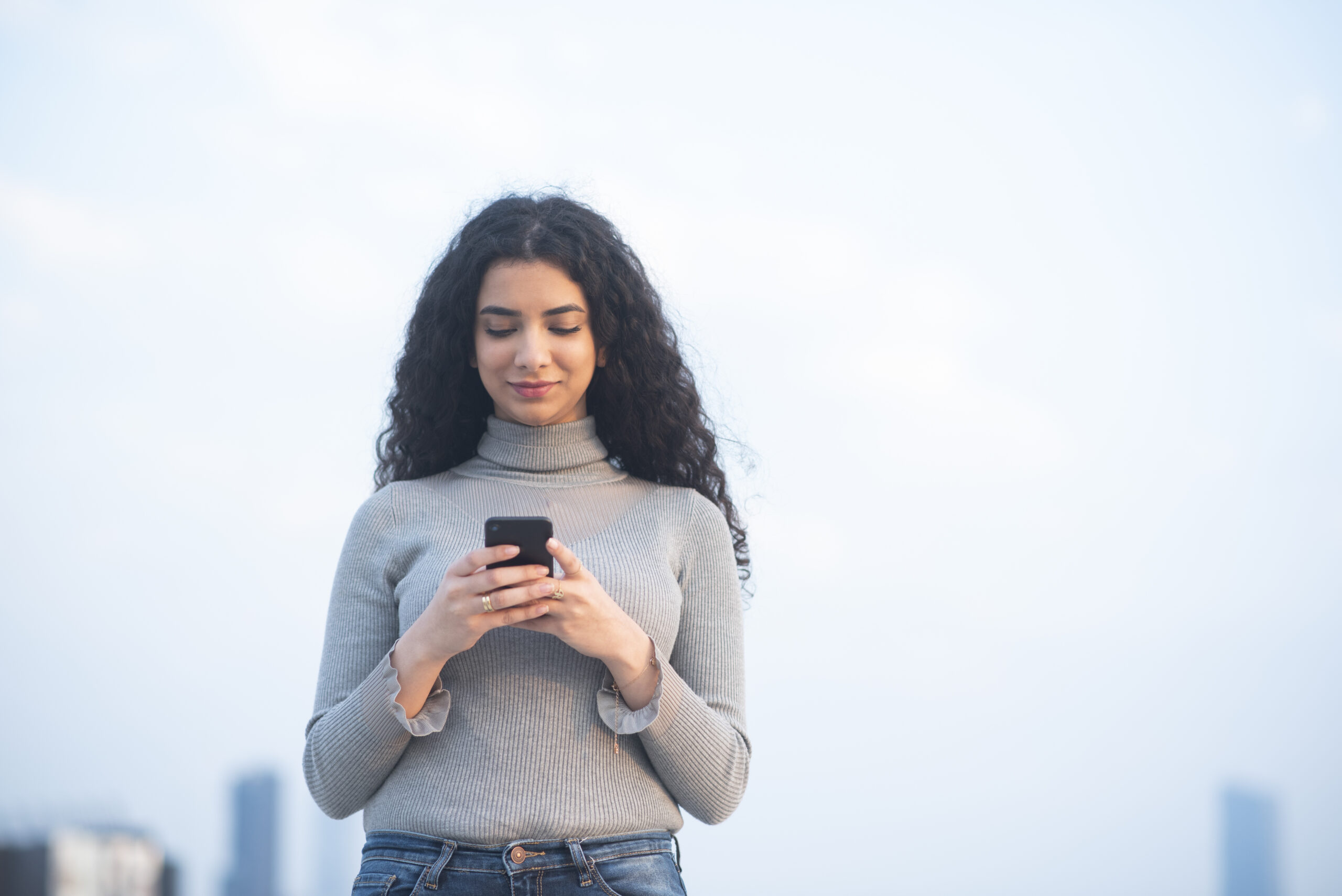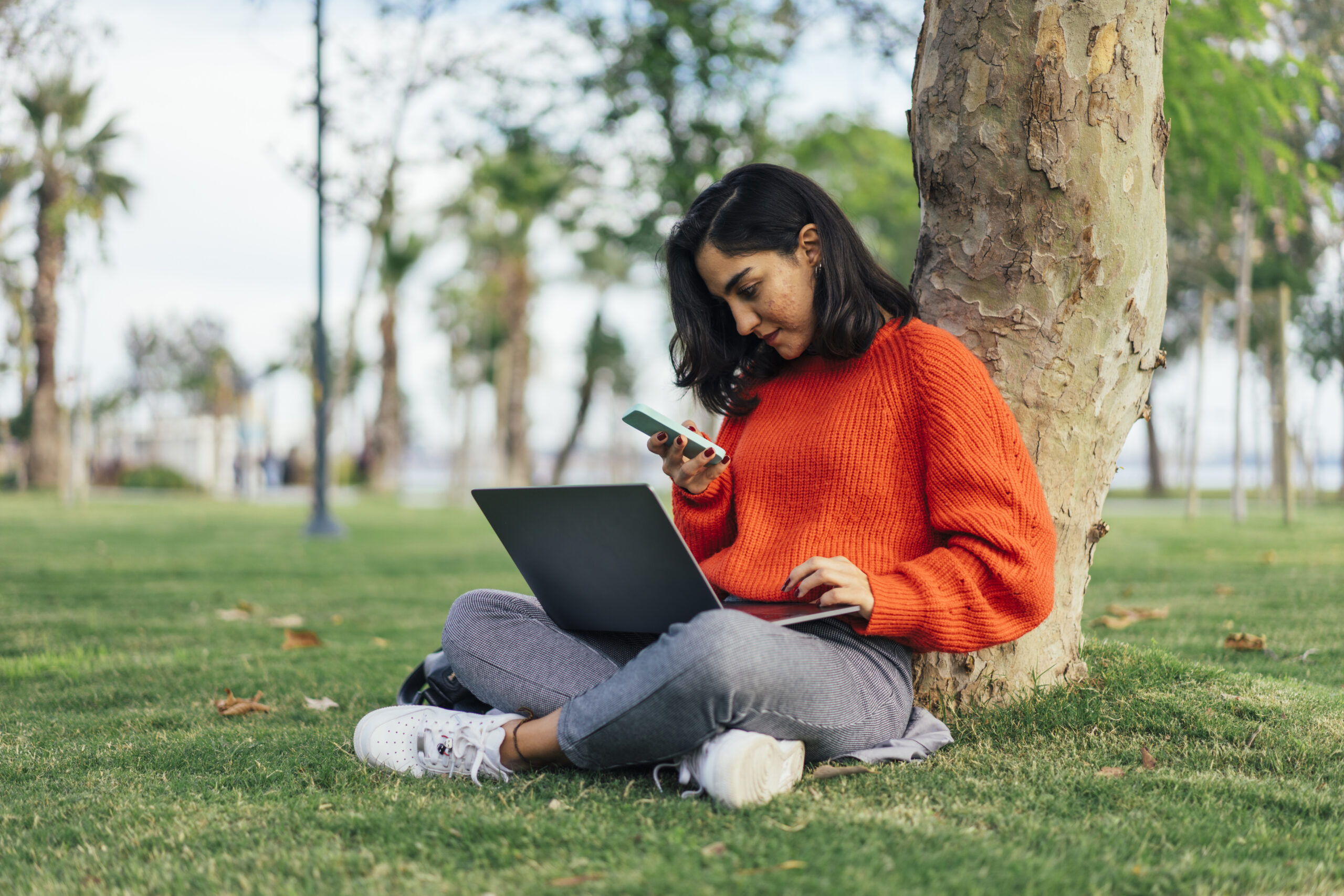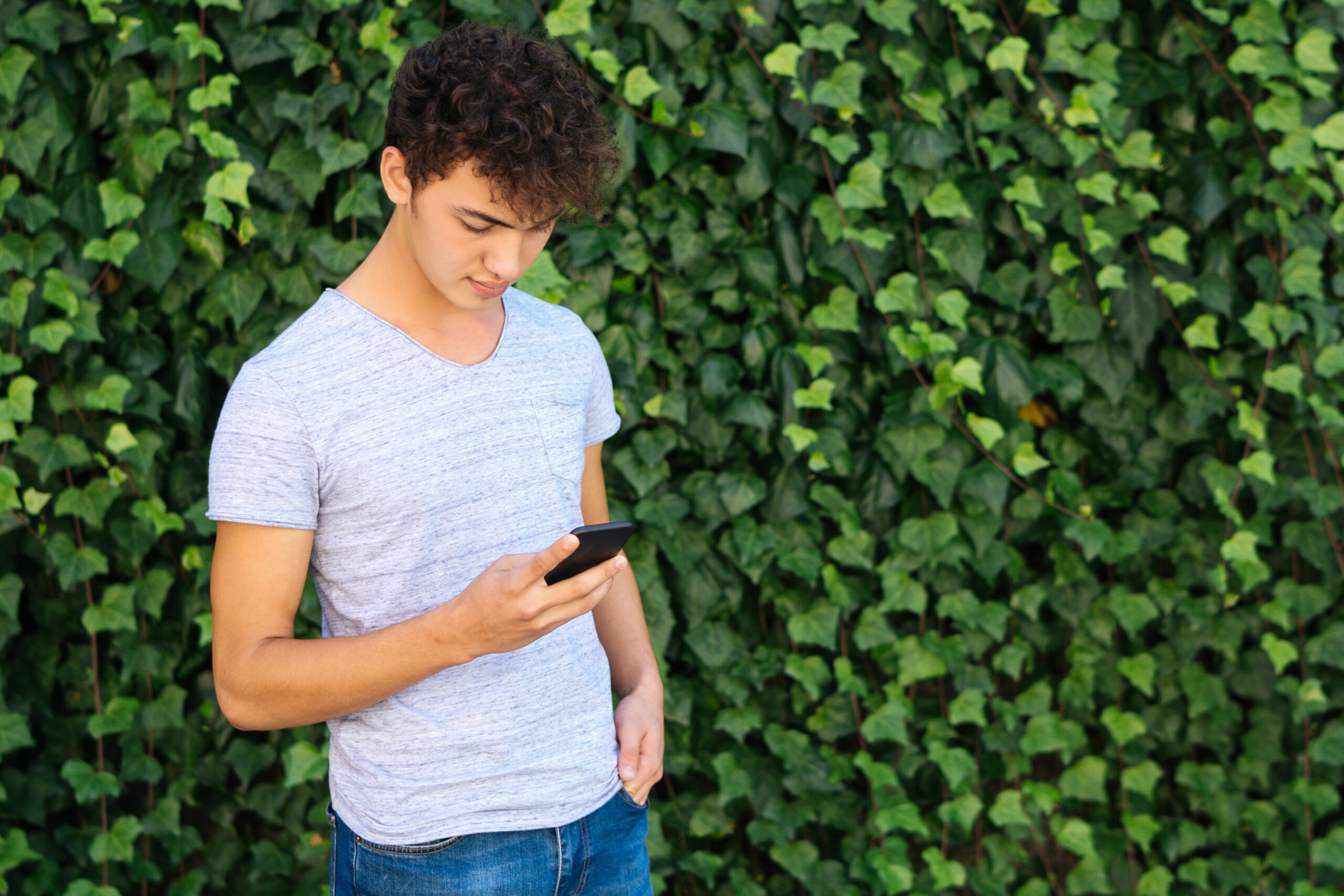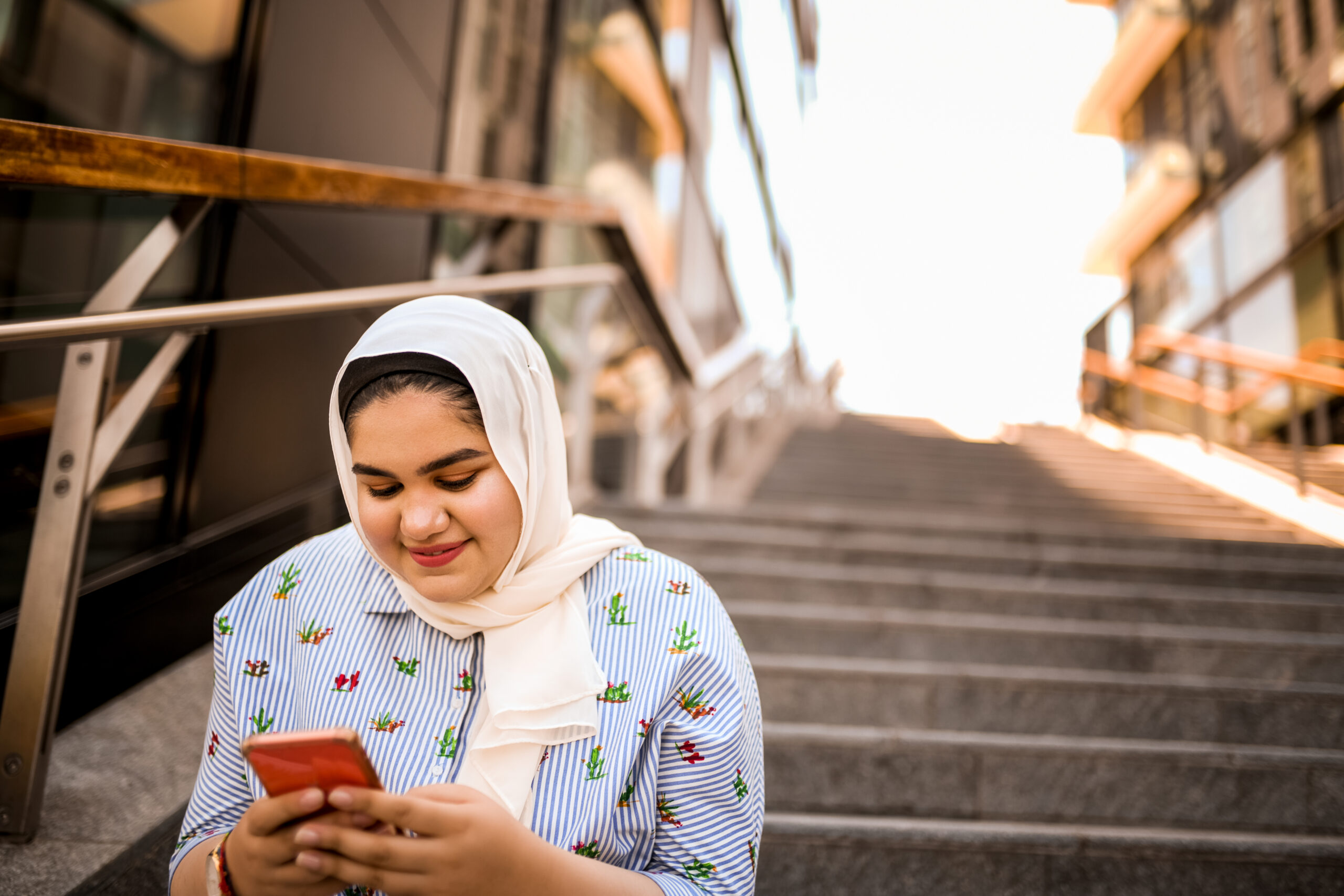Lesson 2: Social Media and Sharing
Before you start the lesson, make sure to read through the lesson overview and the lesson preparation. The Facilitator Guide can also help you prepare.
Lesson Overview
Students will think about privacy in terms of how they share information and communicate with others online, specifically regarding social media use. They will be able to explain tradeoffs in privacy in the context of social media and learn how to use online privacy settings effectively.
Lesson Preparation
ESTIMATED TIME
ESSENTIAL QUESTION
- What is the potential reach of the content you post on social media?
PREPARATION
- Tape AGREE and DISAGREE signs to opposite sides of the room.
- A viral media clip relevant to your community.
- There are several opportunities to localize content to your students’ experience and local context. These opportunities are flagged as “Teacher’s Notes” throughout. We suggest you read through the lesson ahead of time and prepare the examples before the lesson begins.
OPTIONAL: ISTE DIGCITCOMMIT COMPETENCY
- INCLUSIVE: I am open to hearing and respectfully recognizing multiple viewpoints, and I engage with others online with respect and empathy.
- ALERT: I am aware of my online actions and how to be safe and create safe spaces for others online.
Social Media Use
Teacher's Note
Before this activity, tape the “AGREE” and “DISAGREE” signs on opposite sides of the room.
TELL YOUR STUDENTS
Let students know that once you read out each statement, they should stand close to one side or the other depending on how strongly they feel; students may also stand in the middle of the two signs if they are unsure/undecided.
CLASS INTERACTION
In between statements, ask students to explain their position and engage the group in short discussions about each topic.
TELL YOUR STUDENTS
I’m going to read out a statement. If you agree 100%, move to the “AGREE” sign. If you disagree completely, move to the “DISAGREE” sign. If you’re unsure or don’t agree/disagree completely, move toward the middle in a position that best represents your view.
- I have an account on a social media platform like Facebook, Twitter, Snapchat, or Instagram.
- I use social media every day.
- My social media profile — on the social media platform I use the most — is public.
- I have different friends/followers/connections (in other words, a distinct audience) on the various social media platforms I use.
- My generation has a different way of thinking about information shared on social media platforms when compared with adults.
- I use different social media platforms for posting specific types of content.
Part 1
TELL YOUR STUDENTS
A social media platform is an online platform you can use to connect with people and interact with them.
ASK YOUR STUDENTS
- What are some social media platforms you’ve heard of?
Part 2
Teacher's Note
Before the following activity, tape the “AGREE” and “DISAGREE” signs on opposite sides of the room.
CLASS INTERACTION
Let students know that once you read out each statement, they should stand close to one side or the other depending on how strongly they feel; students may also stand in the middle of the two signs if they are unsure/undecided. In between statements, engage the group in short discussions using the questions below each statement.
TELL YOUR STUDENTS
I’m going to read out a statement. If you agree 100%, move to the “AGREE” sign. If you disagree completely, move to the “DISAGREE” sign. If you’re unsure or don’t agree/disagree completely, move toward the middle in a position that best represents your view.
For this activity, think about the social media account you use the most.
ASK YOUR STUDENTS
My social media profile is set to public.
- Does this change the way you post things online? How so? Or if not, why not?
- My social media profile is for friends/people I know really well only.
- Why did you make this decision?
- Would you post different things if everyone could see it? What kind of things?
I have a friend/follower/connection on social media who I have never met in real life.
- Why did you friend/follow/connect to this person? Was it someone you met online or never before?
- How would you describe the relationship?
- Because you solely interact online, does it influence how you interact? What are some of the benefits to this type of interaction? What are possible challenges?
I accept every friend/follower/connection request I get.
- What is a benefit of this approach? What are possible challenges?
- Do friend/follower/connection requests matter when it comes to your privacy? If so, how? If not, why not?
- Whenever I meet new people, I send them a friend/follower/connection request.
- Why is this a good/bad idea?
ASK YOUR STUDENTS
Online, I’m friends with/followers of/connected to my parents/guardians or teachers.
- Does this change the way you post?
- Do the adults in your life ever make comments on what you post online?
- What are possible benefits and/or challenges of being friends/followers of/connections with your parents/guardians or teachers?
I have deleted friends/followers/connections.
- Why did you make this decision?
- Some of the stuff on my profile can be seen by friends of friends/people I am not directly connected to on social media.
- Which things?
I have looked at and/or changed my privacy settings.
- Why or why not?
- Were these privacy settings easy or confusing? What would make these settings easier to view/change?
How Big is Your Network?
Part 1
TELL YOUR STUDENTS
Now, let’s talk about the potential scope of your online audience on social media. There are two main ways of sharing content (e.g., photo, video, text-based post) with an audience. Content can be shared with a default audience, which can be just your friends/followers/those you are connected to or it can include friends of friends as well. In addition, your initial audience can share the content with their friends/followers/those they are connected to.
You can likely choose your immediate audience, but it’s much more difficult to control with whom your audience reshares/reposts/retweets content.
ASK YOUR STUDENTS
- Assume that you share content with your friends/followers/those you are connected to and that the same content also gets shared with their friends/followers/those they are connected to. How many people do you think you’re sharing with?
Part 2
CLASS INTERACTION
Write the following equations/results on the board.
TELL YOUR STUDENTS
Let’s do a little math. If, for example, you have two friends/followers/connections on a social media platform and each of them has three friends/followers/connections, then how many people, at maximum (some friends/followers/connections may probably overlap) can see the content you share on the platform?
If you have 10 friends/followers/connections on a social media platform and each of them has 10 friends/followers/connections, then how many people, at maximum, can see the content you share on the platform?
- Answer: 10 + 10 x 10 = 110
If you have 300 friends/followers/connections and they each have 300 friends/followers/connections, how many people, at maximum, can see the content you share on the platform?
- Answer: 300 + 300 x 300 = 90,300
These calculations were based on the assumption that your immediate audience shares content with their immediate audience, but no additional sharing happens after that. However, in many cases, content can be shared well beyond those immediate two audiences.
Part 3
ASK YOUR STUDENTS
- How do you feel about the possibility that so many people you possibly don’t know (you might know some of your friends’ friends) could easily learn about what you do online?
- What might be some of the negative and/or positive aspects of this?
- Why does this matter?
- Does this change the way you think about sharing things online? Why or why not?
Sharing Online
Discussion 1
TELL YOUR STUDENTS
You may share things online for an intended audience, but when you make content public, it may gain unexpected attention. Media shared online can go “viral,” spreading quickly over social media, being replicated and possibly remixed.
ASK YOUR STUDENTS
- Can anyone think of an example of viral media?
- If not, ask them to think about memes, remixes, or popular videos they’ve seen and/or shared with their friends.
- CLASS INTERACTION
Show a recent example aligned with your/students’ local/regional context to further solidify the concept.
Teacher's Note
The viral content example can be localized to reflect your student’s local context in the area you are teaching. This example is intended to show viral content online to teach students that once content is online, it can be challenging to control who sees it.
Discussion 2
TELL YOUR STUDENTS
Viral media can be good if you want to draw attention to your work. However, unwanted attention can potentially include harassment and cyberbullying. A private video that gets leaked or shared without your permission could be damaging to your reputation.
ASK YOUR STUDENTS
- What are some ways that content about you online can be shared beyond your intended audience and how could this potentially impact you and/or your reputation?
Privacy Options for Social Media Platforms
Part 1
TELL YOUR STUDENTS
Now that we’ve talked about some reasons why you might not want everything you do online to be public, let’s talk about how we can manage our privacy online.
Part 2
CLASS INTERACTION
In between questions, elaborate on the discussion using the statements following each question.
ASK YOUR STUDENTS
- Does it make sense to have different privacy settings for different types of information?
- You may consider different pieces of information as having different levels of privacy. You may want to share a photo of your face, a tweet about your political or religious beliefs, or a story of a funny video with different audiences.
- What about different privacy settings for different people? For example, do your parents/guardians and friends get to see the same thing on your social media account(s)?
- Students may not want their family to be able to comment on their posts but may want their friends to react.
- Would you ever go back and review everything you have been tagged in? Why or why not?
- You may want to remove any embarrassing content (e.g., a photo from a bad hair day, a post about you that you don’t want to be shared). On certain social media platforms, such as Facebook, you can change your settings so that you have to approve something before it appears on your profile. Do you think that is a good idea? Why or why not? It allows you to help prevent embarrassing content from being attached to your social media account. However, it does not stop the person posting the content from sharing it on their account with their friends/followers/people they are connected to.
- Why might someone want to limit who can look them up? Can you give an example?
- You may not want strangers/people you don’t know well to friend/follow/connect with you on social media or send you unsolicited messages.
- Are you friends with/followers of/connected to your parents/guardians online? Teachers? Other adults? Does this change the type of content you share or with whom you share content? Do parents/guardians or teachers need to be friends with/followers of/connected to you to see your profile?
- Students should consider whether their own privacy settings allow the general public to see their social media profiles. Help them think about other ways that parents/guardians or teachers can view their profiles.
- What about different privacy settings for different social media platforms? On Twitter, are your tweets public or private? How many people can view your Snap stories?
- How many people can access your Instagram feed? Can others look at your videos on YouTube? Can people see your photos on Facebook, beyond your profile picture?
- If students don’t know, tell them there are privacy settings for this.
- Do you tweet under your real name or a pseudonym? Why?
- Students may not want the general public to know what their real name is. In this situation, they may want to use a pseudonym.
Part 3
CLASS INTERACTION
Organize students into pairs.
TELL YOUR STUDENTS
We know that privacy settings can be kind of confusing. In your pairs, take a few minutes to come up with a question or comment about privacy settings.
CLASS INTERACTION
Give students five minutes to come up with a question or comment about privacy settings. Ask them to share with the whole group and answer each question proposed. Solicit answers from other students before giving your answer. If computers or mobile devices with internet access are available, demonstrate how to manage privacy settings online.
Assignment
TELL YOUR STUDENTS
Now that we have talked about social media privacy let’s extend that by developing a guide that could be used to help others learn what you’ve just learned.
Over the next 30 minutes, individually, create a short guide to help others:
- Think about the audiences of their social media posts.
- Reflect on what they want to share publicly and what they might want to keep private and why.
- Consider why they might want to review and/or edit their social media privacy settings.
- Figure out how they can set different privacy settings for different content and why they might want to do so.
This guide can be any format you’d like. You can write out a step-by-step text guide, fashion it like a “user’s manual,” incorporate pictures or a flowchart, or use any other method you think would help others learn these things; feel free to be creative!
In the guide, make sure to also:
- Show readers how to review and change privacy settings on a social media platform.
- Provide an answer to a question about privacy settings you believe to be important, based on the previous group discussion.
Teacher's Note
Encourage students to select different platforms so that, collectively, more platforms are covered. Give students 30 minutes to finish the assignment.
Congrats!
You've finished the lesson
Source:
This content is hosted by Meta and currently includes learning resources drawn from Youth and Media at the Berkman Klein Center for Internet & Society at Harvard University under a Creative Commons Attribution-ShareAlike 4.0 International license. You can make use of them, including copying and preparing derivative works, whether commercial or non-commercial, so long as you attribute Youth and Media as the original source and follow the other terms of the license, sharing any further works under the same terms.



 Previous Lesson
Previous Lesson 
